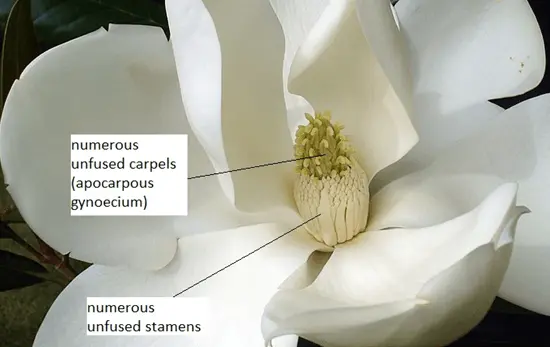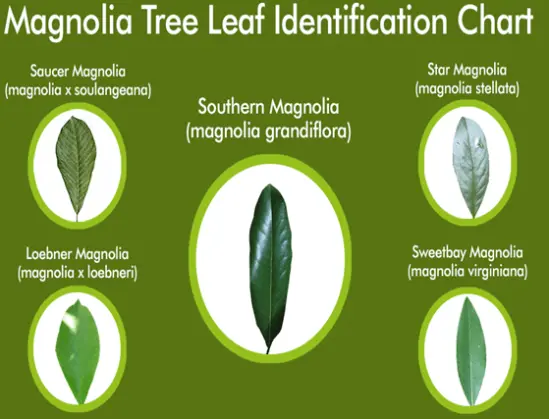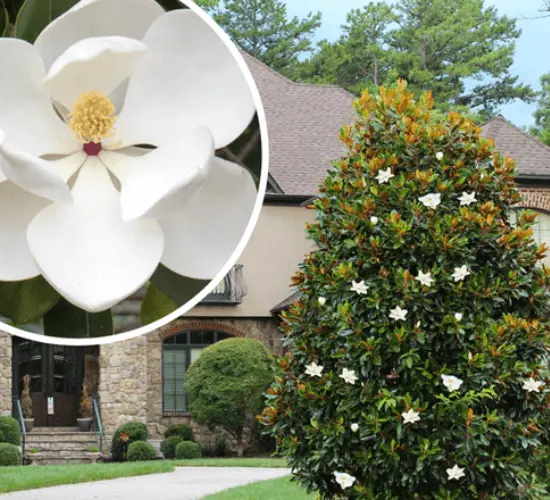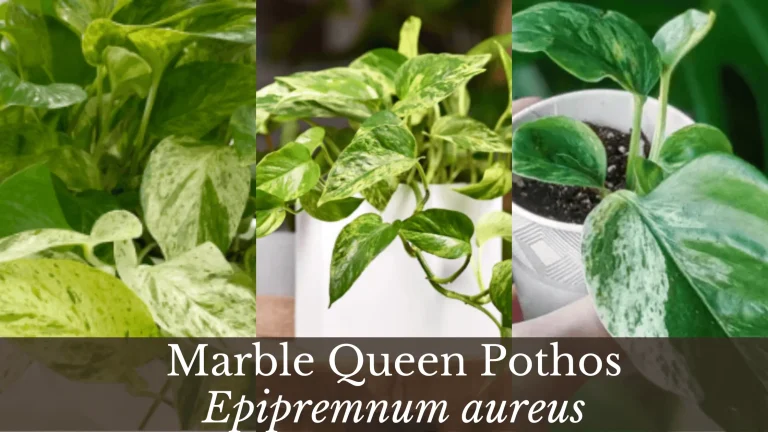Pink Magnolia Tree | 11 Types | How to care and Grow Magnolia soulangeana
The Pink Magnolia tree is a beautiful, deciduous flowering tree. It can grow to great heights, towering up to 70 feet tall. It has a lovely, wide-spreading canopy that can add aesthetic value to your garden for about 120 years. It has delicate pink blossoms and deeply rich, green leaves
French Botanist Pierre Magnol (1638-1715) Discovered this plant species in 1703. Pierre Magnol identified Magnolia Virginiana, an evergreen American species. They were of various colours like Vinca Vine and Variegated Hostas
They are an important member of the aesthetic plant family. But there’s more to why this ornamental tree should be in every garden than its stunning beauty. The Pink Magnolia tree is also able to;

- Bicolored varieties are perfect for scenic beauty
- Sequester carbon emissions
- It plays a key part in lowering your carbon footprint
Key Features of Pink Magnolia Tree
Following are the key features of the plant to distinguish it from the others.
Facts and Features
The pink magnolia tree is a deciduous tree that can grow up to 70 feet tall and live for up to 120 years. The tree has a large flower bud that blooms in the spring before the leaves emerge. Its flowers have five petals that range from yellow to pink, making it easy for people to identify the tree by its color alone.
| Common Name | Pink Magnolia, Lily Tree |
| Scientific Name | Magnolia soulangeana |
| Family | Magnoliaceae |
| Genus | Magnolia |
| Soil | Well-drained, Sandy loam |
| Soil pH | 5.0-6.0 (slightly acidic) |
| Leaf | Oval shaped |
| Bark | Gray and smooth |
| Seed | Cut Flowers, Fragrance, Aesthetic Values, Mostly planted on borders |
| Blossoms | White and pink |
| Blossom Time | Early Spring |
| Exposure to Sun Light | Partial to full exposure |
| Fruit | Pinecone |
| Height | Up to 70 feet |
| Canopy | Up to 40 feet |
| Native habit | South Eastern United States |
| Maintenance | Low |
| Type | Deciduous |
| Age | Up to 120 years |
| Hardness Zones | USDA zone 4-9 (United States Department of Agriculture |
| Uses | Cut Flower, Fragrance, Aesthetic Values, Mostly planted on borders |
The Pink Magnolia tree has some specific needs. Like others in this genus, it needs a lot of room to spread its branches and good, well-drained soil to develop a strong root system. The type of magnolia tree has some specific needs. Like others in this genus, it needs a lot of room to spread its branches and goods.
Morphology of Pink Magnolia
Looking at the plant, you will observe the following morphological features.
Morphology of Flower
They produce 1 ½ to 3 inches wide flowers with up to 18 leathery Tepals (fused petals and sepals). Flowers contain both male and female reproductive organs (monoecious plants). The color of the flower depends on the species, and it can be white, yellow, pinkish, purple, and green.
The inflorescence is a solitary, showy flower with indistinguishable petals and sepals. Sepals range from six to many; stamens are numerous and feature short filaments poorly differentiated from the anthers. Carpels are usually numerous, distinct, and on an elongated receptacle. Fragrant, creamy-white flowers, which discolor easily if bruised, appear on the ends of thick, tough stems all over the tree.

Bloom Time
Their bloom time varies with the variety. Most types bloom at the end of the winter and early spring (February – June). The flowers are typically oval-shaped and large in red, pink, and purple shades. Some varieties have yellowish margins and white inside, creating beautiful bicolor effect. However, Oyama Magnolia blooms during the late spring and summer.
The Star Magnolia blooms from late March through the end of April, indicating warmer weather. During May and June, the sweet bay and southern magnolias unfurl their wide, cup-like petals.
The flowering of these plants lasts about three weeks if no late frost intervenes – magnolias are very sensitive to frost and turn brown. Plant a late-blooming magnolia species if you live in a region where late frosts are common.
All magnolia trees bloom; however, some magnolia trees bloom more than others due to certain key factors. These factors can even prevent magnolia from blooming. For instance, magnolia planted in a cold climate might not bloom because flower buds are very sensitive to cold.
Morphology of leaf
The leaves are simple and broadly ovate, 12–20 cm (43⁄4–73⁄4 inch) long and 6–12 cm (21⁄4–43⁄4 in) broad, with smooth margins. They have a dense growth of smooth, leathery, evergreen leaves that are alternate. Leaves are shiny on top while rusty on the bottom surface.

Types of Magnolia soulangeana (Pink Magnolia)
They can be found in every shade of pink color. Usually, the inner side of the petals is light (whitish pink), while the outer side looks darker.
Magnolia macrophylla
The blooms of this big leaf magnolia are white, with long flower segments often red-spotted. In some instances, pinkish-purple hues are present throughout the petals, while in other cases, you can find streaks of deep purplish red near the base of the flower, where the petals meet the stamen. As their name shows, these magnolias have giant leaves that can grow from 12- to 36 inches long.

Magnolia acuminata
This magnolia species can grow to heights of 60- to 80 feet tall to get full exposure to the sun. In the summer, it produces flowers in shades of yellow and yellow-green. It has 3 major types. ‘Brenas’ has deep yellow flowers.
- ‘Koban Dori’ is canary yellow
- M. acuminata subcordata has big flowers with a lemony fragrance.
- These trees are mainly grown for foliage rather than flowers.

You may find blooming in this variety of these trees ranging from late winter to midsummer. The Star Magnolia blooms from late March through the end of April. It seems like an indication of warmer weather. During May and June, magnolias unfurl their wide, cup-like petals.
Magnolia liliiflora
This name, Magnolia lilliflora—speaks to the tree’s graceful, tulip-shaped, lily-like blooms. These blooms have elongated petals that are purplish on the exterior and creamy white on the interior. ‘Gracilis’ and ‘O’Neill’ have purple-and-pink blooms.

Magnolia loebneri
The flowers of the deciduous Loebner magnolia resemble those of the star magnolia. However, these blooms are spaced farther apart on the tree. Their flower segments, shaped like straps, are longer and broader than those of M. stellata. ‘Ballerina’ is blush pink and fragrant, while ‘Merrill’ has white blossoms. They love to grow in well-drained sandy loam, slightly acidic (6.2 pH) soil.

Magnolia soulangiana
This type of Pink Magnolia is also known as “tulip trees” and “Chinese magnolias,” these magnolia trees produce fragrant, rounded, cup-shaped blooms in shades of white, pink, and purple. They bloom from late winter to spring, often before the deciduous foliage emerges.
‘Alexandrina’ produces blooms with white centers and purple exteriors
‘Lilliputian’ has pink and white flowers
Rustica Rubra‘ has huge reddish-purple blossoms.

Magnolia sieboldii
A compact deciduous magnolia species, M. sieboldii, bears white, fragrant, cup-shaped flowers and striking-gold stamens. Following the flowers, pink oval-shaped fruits appear, which open up in the fall to reveal striking orange and red seeds.
‘Harold Epstein’ and ‘Michiko RegneRegne’ produce semi-double blooms.

Magnolia grandiflora
This evergreen magnolia is also known as the Southern magnolia. It can be identified by its thick, glossy leaves and big, fragrant white blossoms. It blooms in summer and grows well in partial sun. It flourishes well in sandy loam soil with 5.2 to 6.2 pH. It is the state flower of Mississippi and Louisiana.

Magnolia stellata
This magnolia species produces distinctive blooms with clusters of long petals. This type is smaller, reaching heights of 15- 20 feet and widths of around 10- 15 feet. Due to its size, this variation can be grown as a larger shrub or a smaller tree.
‘Centennial’ has white blossoms
‘Jane Platt’ blooms rosy pink
‘Water Lily’ produces pink buds and fragrant white flowers.
All these varieties grow well in clay-loam soil with pH ranging from 5.0 to 6.0.

Magnolia virginiana
Look at another magnolia native to the South. This sweetbay magnolia is a smaller, more cold-hardy look-alike of its close relative, M. grandiflora. It has creamy white flowers and glossy dark green leaves. It only grows up to 10- to 20 feet high, making it an excellent selection for hedges and borders. This tree is evergreen in mild coastal climates and deciduous in places with colder winters.

Magnolia tripetela
The flowers of umbrella magnolias have red seedpods, purple stamens, and distinctive flower segments tinged with a greenish-yellow hue. They grow large—up to 10 inches across—and are deeply fragrant. They are well adapted to sandy loam.

Magnolia denudate
This magnolia species bears fragrant white blooms that are upright. They are shaped like tulips. The flowers often have a purplish tint where the bloom meets its stem. ‘Double Diamond’ is a selection with a heavier overall bloom than the rest, making it a beautiful and dramatic planting choice.

Growing and Caring for Magnolias
Pink Magnolia is not care-intensive. Magnolia trees need little help from you to grow well. They’ll live up to a century (120 years) in the right growing conditions. Andrew Jackson planted a Southern magnolia tree at the White House in 1828. It lived for 190 years. The severely decayed tree was cut down in 2017, yet it was blooming up to the end.
Water Requirement of Magnolia Pink
Most varieties tolerate hot summers and some droughts. But younger trees must be watered regularly for two years until they’re established. Drip irrigation is the best for this tree, which requires frequent irrigation.
Fertilizer Requirement of Pink Magnolia
Fertilizing: No fertilizer is needed if your tree is healthy and blooming. Feed a young tree at the time of planting. Try to keep feet away from the root zone of young trees; otherwise, the rhizosphere will be consolidated and become hard. It will restrict the growth of roots. Their roots are sensitive and easy to damage.
How we can Trim and Prune Magnolia Plants?
Magnolias only need a little pruning other than to lop off damaged branches. However, you can shape up the tree to keep it looking good. The best time to prune is right after the tree finishes blooming, in late spring or early summer.
Pests and Problems Control
Deer don’t usually damage magnolias. This is good news if you have this herbivorous friend visiting your garden. Magnolias are resistant to most pests and diseases.
FAQs
What is so special about the Magnolia tree?
In Chinese culture, the magnolia tree symbolizes purity and nobility.
The tree was also known for its healing powers in traditional Chinese medicine.
Magnolia bark is used as a sleeping aid.
Are Magnolia flowers male or female?
Southern magnolia flowers are perfect as they possess both male and female reproductive structures. These flowers are helpful in the classification of magnolia trees.
Why is magnolia called magnolia?
Magnolia was named by the Swedish botanist Carl Linnaeus in 1737 in honor of the French botanist Pierre Magnol (1638-1715). Pierre Magnol identified Magnolia Virginiana, an evergreen American species. Further characterization is based on flower color like Pink Magnolia.
What do magnolia trees symbolize?
In the United States, the Magnolia tree symbolizes luck and stability. It’s a staple in Southern gardens and delights people with its flowers in the early to mid-spring.
In the east, the white blooms of the magnolia represent nobility and purity, while many of its parts are used in traditional folk medicine.
How big can pink magnolia trees get?
Magnolias typically grow between 60 and 80 feet in height, and their root systems can spread up to 40 feet outward. Meanwhile, the magnolia root system is extensive and only goes a little but not deep into the ground. The roots grow horizontally rather than vertically and stay relatively close to the soil’s space.
What are the special features of the magnolia tree?
They are known for their large, showy flowers, which are fragrant and grow singly at the tips of branches in many species.
Magnolia wood is usually soft and light in color and is used in making crates, boxes, and light furniture.
I’m Dr Qaiser Maqsood (PhD), a dedicated researcher and expert in Biological Sciences, Gardening, Bio-Diversity, Ecology, and Environmental Sciences. I’m much concerned about Environmental Pollution, Climate Change, Plantation, Gardening, and Global Warming. My passion is to explore innovative solutions in all these fields.
Be aware that we have ONLY ONE EARTH. Protect it!!






